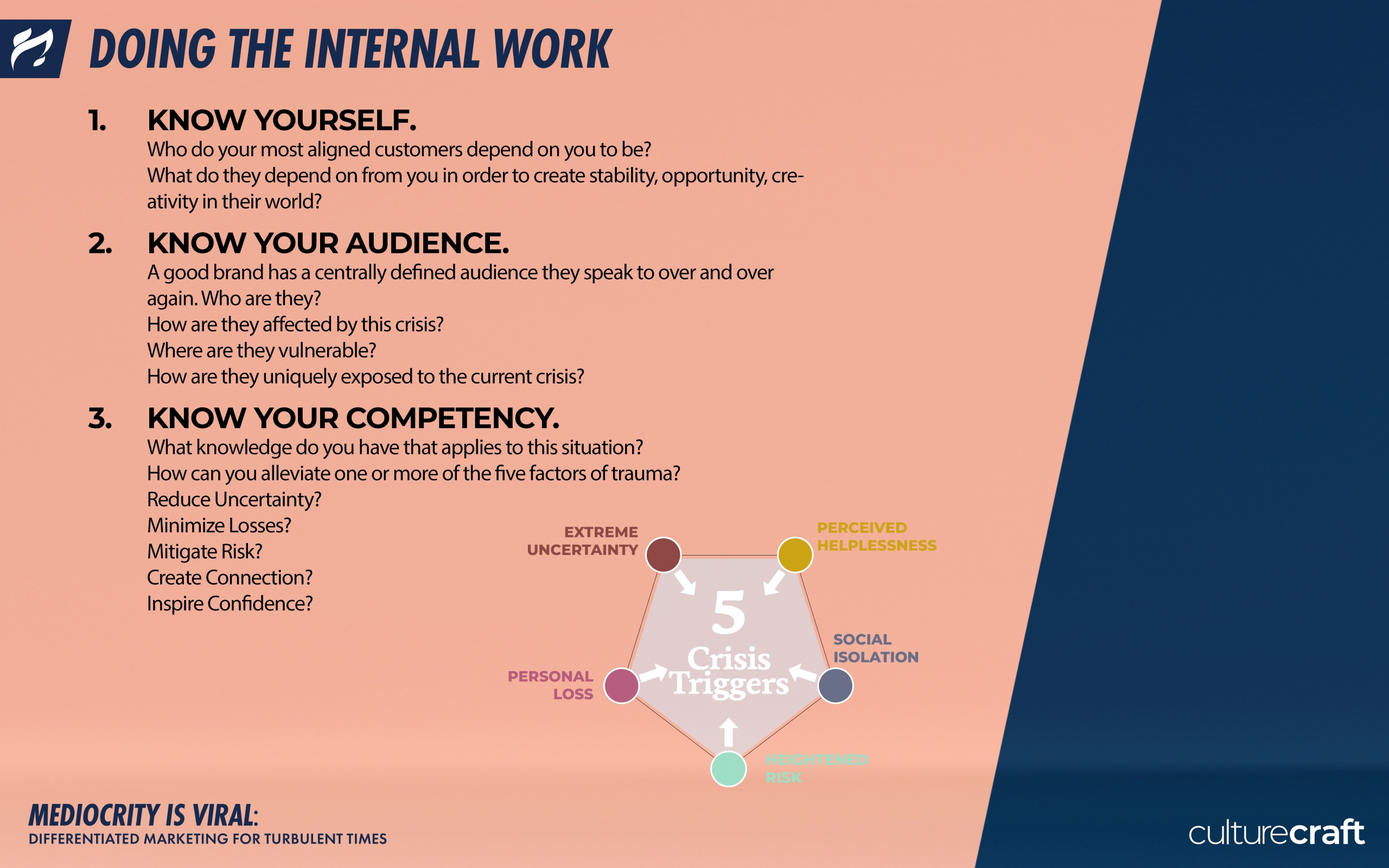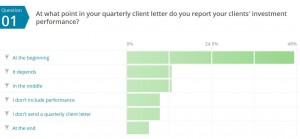Portfolio performance commentary’s basic components
Commentary about portfolio performance is part of every investment manager’s communications. The depth and breadth of commentary varies widely. It can consist of a single line giving portfolio returns. Or, it can be a multi-page report full of charts, graphs, and details. The longest reports typically target institutional clients—not individuals.
In this article, I review portfolio performance reports’ common components.

1. Portfolio returns
Your portfolio’s results for at least one period are the sole essential element of portfolio performance reports. Portfolio returns are typically compared with the returns of one or more benchmarks to provide perspective on how the portfolio performed relative to its goals, investable universe, or peers. For mutual funds or ETFs, the main benchmark is specified in its prospectus. For separately managed accounts, the benchmark may be specified in the investment policy statement.
Showing multiple benchmarks can provide perspective on performance. Say, for example, you run a small-cap stock fund in the space between growth and blend. Showing returns for the Russell 3000 Growth and for the plain-vanilla Russell 3000 indexes helps readers to understand the extent to which your portfolio’s less growth-oriented approach affected its performance.
Comparing your portfolios performance to its peers—say, Lipper Small-Cap Growth Funds if you run a mutual fund or its decile ranking in an applicable universe of institutional funds—also gives perspective. These comparisons may be more favorable than comparisons to indexes because these returns are measured net of expenses, unlike index returns, which have no expenses deducted. Peer groups may offer a more “real world” perspective on what managers can achieve.
Once you pick indexes for comparison, you must stick with them. You can’t decide, “we look good vs. Lipper this quarter, but bad vs. the S & P 500, so let’s only use Lipper this quarter.” The SEC doesn’t like that.
Similarly, you must be consistent in the periods of performance that you show. It’s a good idea to show more than one quarter of performance. You don’t want your clients to fixate on short-term performance. But once you start to show one-year, three-year, and since-inception returns, you must continue to show them.
2. Attribution analysis
Can you attribute the portfolio’s performance to specific characteristics? That’s the question that attribution analysis seeks to answer.
Attribution analysis is typically measured by numbers, typically percentages. For example, “2.5% of the overall return came from stocks in the financials sector.”
Attribution may be considered relative to a benchmark or independently of benchmarks. When it’s measured relative to a benchmark, a key question is: Why did the portfolio outperform, underperform, or perform in line with the benchmark? You’ll look at factors such as the contributions of security selection, sector weightings, asset allocation, and maybe even cash positions and the flows of money into and out of the portfolio.
You can try to discuss portfolio performance independently of benchmarks. However, you may need to break with that policy if your performance dramatically diverges from the benchmark. This is especially true when you underperform. Your benchmark-savvy clients will want to know why you underperformed.
Numbers don’t tell the entire story of what drove performance. That’s why, at a minimum, someone directly involved in managing a portfolio should review its attribution commentary before publication.
3. Stock or sector stories
Stories about specific securities or sectors can shed light on how active managers think. Stories about winners—and losers—show what the fund managers emphasize in their decisions. Discussions of winners typically show off the managers’ strengths. They also display the managers’ understanding of the larger environment for investments. For example, they may speak to themes, such as beneficiaries of lower commodity prices, that the managers favor. They may also reflect the managers’ market outlooks.
Stories can also illuminate the performance of index funds, to the extent that they demonstrate how the market moves.
To keep the SEC happy, you can’t focus solely on winners, especially if your portfolio underperformed. You must balance your discussion—typically by discussing at least an equal number of losers, although you may have some leeway in a period when losers are hard to find.
Losers pose an extra challenge to writers. Should you defend your holding, in addition to explaining its performance? I like the consistency of keeping the format the same for both winners and losers. Plus, if you’re confined by tight word count limits, you can’t fully explain and defend the losers.
However, defensive comments help if you’re writing commentary for use by your firm’s client service team. They’ll thank you for making their job easier when clients question your holdings. Still, if you don’t explicitly defend your losers, you can provide some context for their performance in your market recap or market outlook sections.
For more on how to discuss underperformance, see “Four lessons from Wasatch Funds on reporting underperformance.”
4. Market recap
A market recap discusses recent market performance. It may focus narrowly on the portfolio’s asset class or it may range more broadly to provide context.
For example, a market recap for a U.S. high yield bond fund might discuss Treasuries, investment-grade bonds, and riskier bonds to show how investors’ attitudes toward risk factored into the portfolio’s performance.
The goal of a market recap is to provide context for the portfolio’s performance. It may also provide insights into how the manager views markets.
5. Market outlook and portfolio positioning
Providing insights into the market’s future is the focus of the market outlook. Managers vary in their willingness to make predictions. Passive—also known as “evidence-based”—investment managers may shun predictions. However, for active managers, predictions help their investors to understand their portfolio positioning.
Comments on portfolio positioning complement market outlooks to the extent that the managers’ allocations to securities, sectors, and asset classes are driven by their market predictions. Of course, other factors affect positioning, such as the managers’ perception of long-term trends outside the markets—so-called secular themes—that will influence the performance of investments.
6. Top 10 holdings
Top 10 (or top five) holdings is a popular section on mutual fund fact sheets for the clues it offers into a fund’s composition, particularly when compared with its benchmark.
If you present to institutional clients, who tend to crave more detail than individual investors, you may write a brief description of your top holdings and why they’re in your portfolio.
7. Securities bought and sold
An asset manager’s buy-sell philosophy is important to investors as they evaluate placing their money with manager. Naturally, once they’re invested, they’d like to see how the manager implements that buy-sell philosophy.
Discussion of buys and sells isn’t part of every investment commentary. There simply isn’t room in some formats.
If you discuss your trades, don’t focus solely on your winners. As I said earlier, the SEC doesn’t like that. However, you can use objective criteria, such as every quarter discussing the three largest purchases and the three largest sales.
If you have enough room, give your readers a brief description of each company and why you bought or sold.
8. Graphs and charts
Some information is easier to absorb as a table, chart, or graph. Take advantage of these formats to help your readers. I particularly like graphs that show portfolio performance vs. a benchmark.
What did I miss?
Did I cover everything that you see as essential to investment commentary? Please share your opinions and insights.
Note: This article was originally published on Oct. 13, 2015, and updated in June 2018, November 2022, and August 2023.





